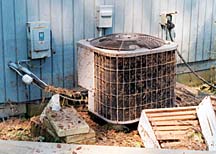
A search for answers as to what happened, and, more importantly, what can be done to strengthen the reliability of our electric system to prevent such an event from recurring was immediately set in motion. With over 6 million residents out of power for up to two days and hundreds of businesses shut down, some for several days, officials in Michigan elected to commence an investigation to examine the blackout from their vantage point.

Not that Mother Nature was calm and cool in 2003. CMP Corp., a manufacturer of compressor replacement parts, suffered damage to its corporate offices and facilities during a tornado that ripped through Oklahoma City on May 8. On September 19, Hurricane Isabel demolished property in North Carolina, Delaware, the District of Columbia, Maryland, Virginia, and West Virginia. Between warranty and insurance work, there were a lot of equipment replacements. Debbie Risher, owner of Belair Engineering and Service Co Inc., Upper Marlboro, Md., had one word for the experience: "Wow!"

Meanwhile, southern California experienced raging wildfires in October, burning more than 650 homes and killing more than 20 people. The state's deadliest blazes in more than a decade raged through areas as far north as Simi Valley in Ventura County, east to San Bernardino County, and south to San Diego County - scorching more than 300,000 acres. President Bush declared Los Angeles, San Bernardino, San Diego, and Ventura counties major disaster areas, opening the way for federal dollars for governments, businesses, and people affected by the fires.
In the end, the fires destroyed more than 1,000 homes and left tens of thousands in houses without electricity.
Publication date: 12/29/2003

Report Abusive Comment